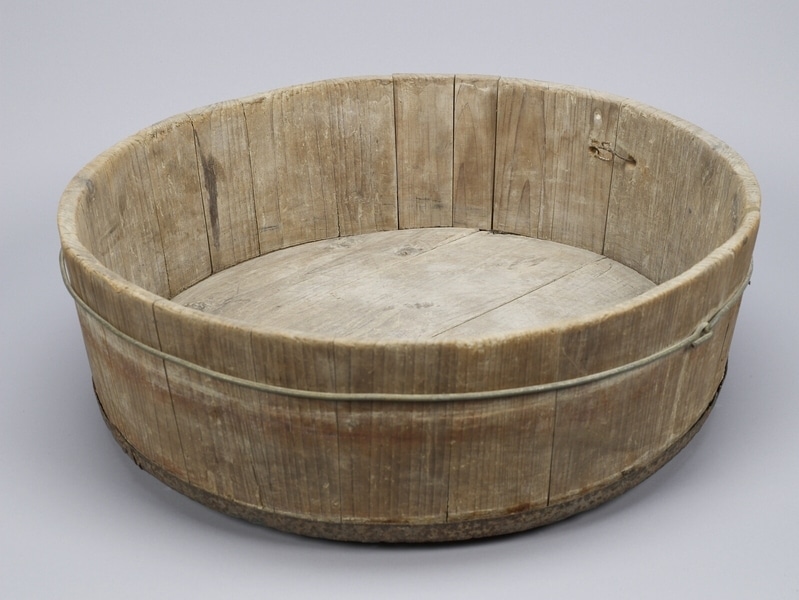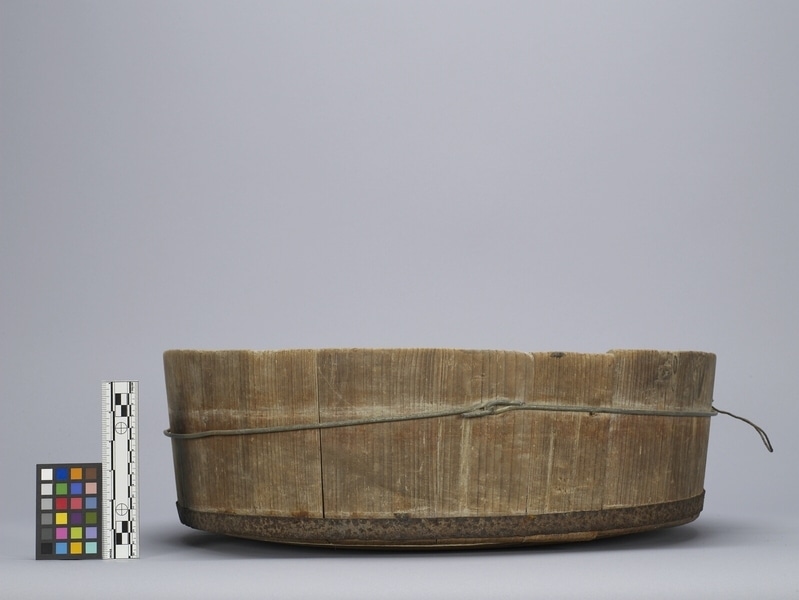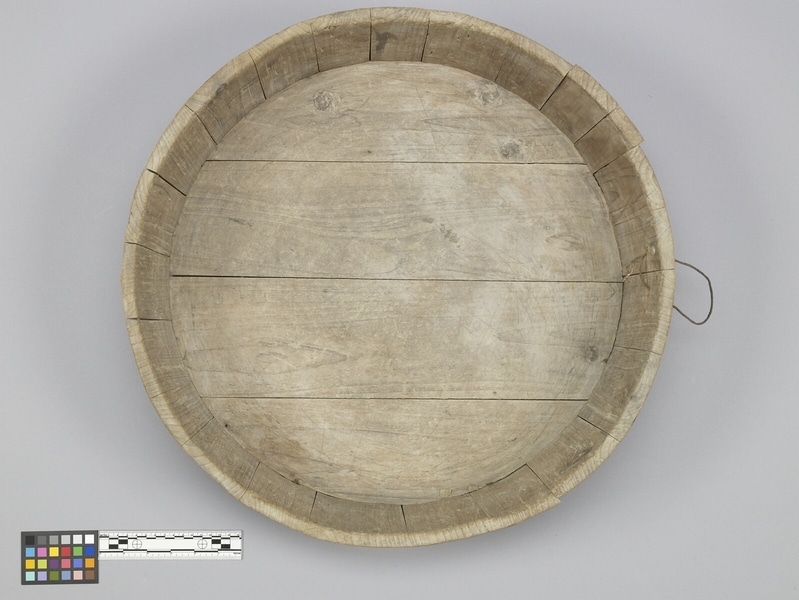Basin Item Number: Edz1189 from the MOA: University of British Columbia



Description
Bowl made from planks of wood held around a circular base made from larger wooden planks with an iron band around the base and thick metal wire near the rim. An iron wire is looped through two holes in the side of the bowl.
History Of Use
When rice was still being grown in the New Territories of Hong Kong, coopered basins of this type were used to hold the rice shoots while they were being transplanted. The rice was initially planted in small nursery beds. When it had sprouted and was tall enough to be transplanted, the paddy fields were prepared. Clumps of rice shoots and the mud they had grown in were placed in basins like these, which floated in the water of the paddy fields and could be pulled along by the wire handles. After the mid-twentieth century the New Territories of Hong Kong began to undergo fundamental changes. The people who had been settled there before 1898, when the British colonizers claimed the area, began to give up rice agriculture and coastal fishing, turning instead to wage labour and increased employment overseas. By the end of the century, educational opportunities leading to the possibility of white-collar work also increased, together with western influences. These changes meant that objects and clothing once useful and appropriate were no longer needed and generally were discarded. Some were saved by their owners, who sometimes were willing to donate them to museums, sharing, also, their knowledge of how they were made and used.
Narrative
This basin, and many other objects in this collection, was collected from the abandoned agricultural village of Tsing Fai Tong, in Tsuen Wan District, Hong Kong. The village, like many others in remote and mountainous areas of Hong Kong, had been abandoned because life there was not economically viable in contemporary Hong Kong. Its former inhabitants, members of the Fu lineage, had moved down to the coastal area of Sham Tseng. Elizabeth Johnson collected the objects from the ruined houses with the permission of the Fu lineage, who donated them to the Museum of Anthropology through the intercession of the District Officer, James Hayes. As Hong Kong’s New Territories modernized it was common for people to discard objects that were no longer useful. Hakka people are one of the two original land-dwelling groups that settled the area that became the New Territories of Hong Kong. Their spoken language, and some customs, differed from those of the other original group, the Cantonese or Punti. The Cantonese arrived first and settled on the best rice-growing lands, while the Hakka began to arrive after the late 17th century and settled the more hilly lands.
Item History
- Made in Tsuen Wan, Hong Kong, China
- Collected by Elizabeth L. Johnson during 1979
- Owned by Elizabeth L. Johnson before March 17, 1980
- Received from Elizabeth L. Johnson (Seller) and Museum of Anthropology Shop Volunteers (Funding source) on March 17, 1980
What
Who
- Culture
- Chinese: Hakka
- Field Collector
- Elizabeth L. Johnson
- Previous Owner
- Elizabeth L. Johnson
- Received from
- Elizabeth L. Johnson (Seller) and Museum of Anthropology Shop Volunteers (Funding source)
Where
- Holding Institution
- MOA: University of British Columbia
- Made in
- Tsuen Wan, Hong Kong, China
When
- Collection Date
- during 1979
- Ownership Date
- before March 17, 1980
- Acquisition Date
- on March 17, 1980
Other
- Condition
- fair
- Accession Number
- 0610/0159